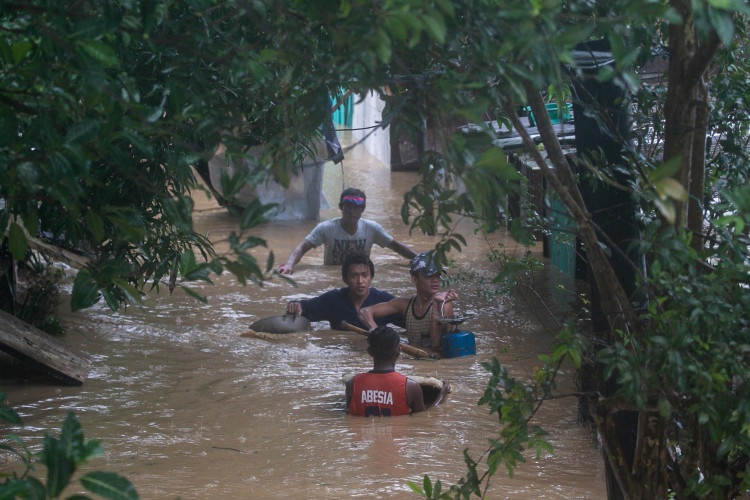Typhoon Vamco has killed one in the Philippines and three are reported missing, local disaster officials said Thursday.
With sustained winds of 155 kilometers an hour and gusts of up to 255 kilometers an hour Vamco, or Ulysses as it is called in the Philippines, made landfall three times late Wednesday over Quezon province, south of Manila, the country's capital.
The Philippine Atmospheric, Geophysical and Astronomical Services Administration said that destructive winds and torrential rains and interior rain bands hit the following areas around 2 a.m. Thursday: Western part of Camarines Norte, central and southern parts of Aurora province, northern and central parts of Quezon including Polillo Island.
As Ulysses continued its way through the main island early Thursday local time the Marikina River's fast-rising waters stoked decade-old memories.
The river was at 12.6 meters at 6 p.m. Wednesday - but in just a few hours local officials said the river reached a second alarm as water levels climbed to 18 meters as of 3 a.m. Thursday.
Marikina Mayor Marcelino Teodoro said the city was working to evacuate at least 3,000 families or around 15,000 residents early Thursday as Ulysses was felt in other parts of Luzon.
The nighttime evacuation efforts were a big challenge, with electricity cut in many areas across the city. "Many of our people were soaked overnight. In some areas, floods have reached the second floor and roofs," the mayor told DZBB radio station.
Flights and public transport in the capital were suspended while the Philippines Coast Guard canceled port operations. Financial markets and government work were suspended.
An archipelago of over 7,600 islands, the Philippines is hit by an average of 20 storms every year.
The 21st typhoon to hit the Philippines this year, Ulysses hammered the country still recovering from the destruction brought by Rolly, otherwise known as Goni, the deadliest typhoon in the worst typhoon so far this year, claimed the lives of 25 people and destroyed thousands of homes early November.
Philippine Atmospheric, Geophysical and Astronomical Services Administration said Ulysses could weaken while crossing Central Luzon as a result of "frictional effects" in the presence of the Sierra Madre and Zambales mountain ranges.






